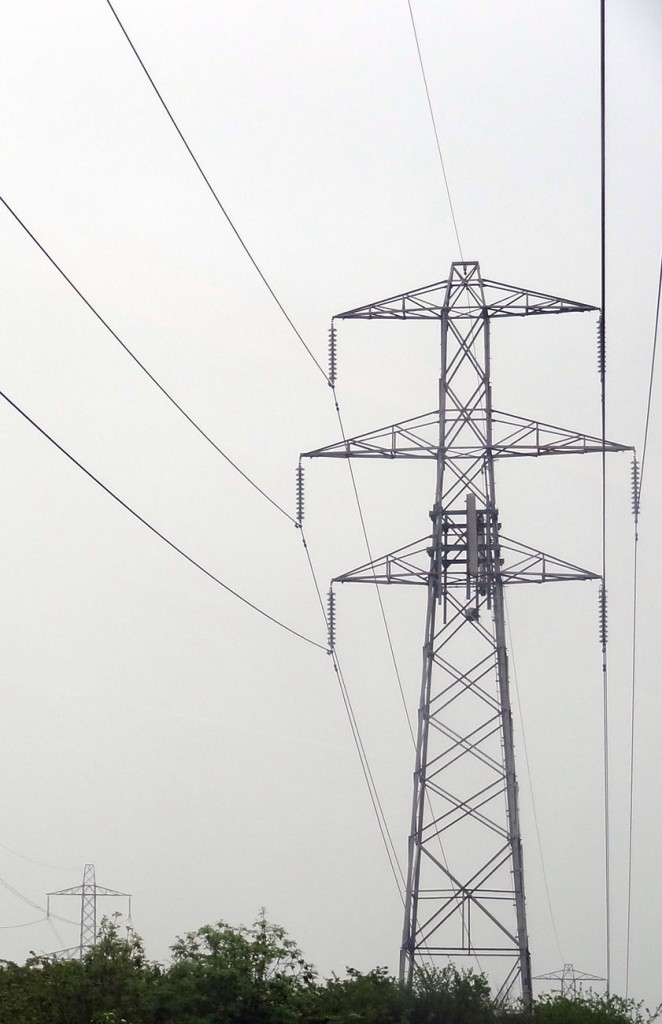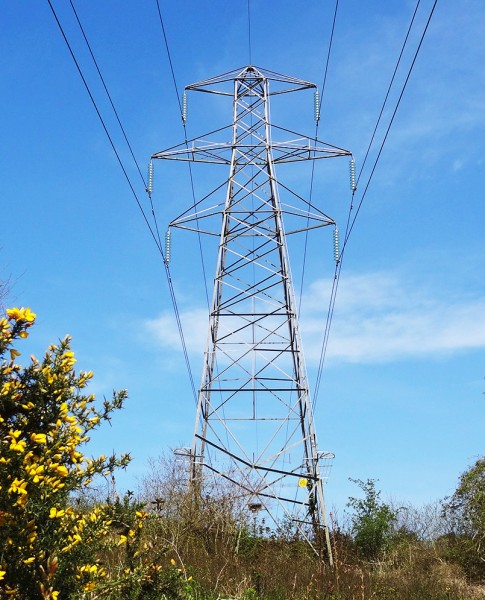 The market structure in which firms operate has important implications for prices, products, suppliers and profits. In competitive markets, we expect to see low prices, many firms competing with new innovations and firm behavior that is in, or at least not against the public interest. As a firm becomes dominant in a market, its behavior is likely to change and consumers and suppliers can be adversely affected. Is this the case with Amazon?
The market structure in which firms operate has important implications for prices, products, suppliers and profits. In competitive markets, we expect to see low prices, many firms competing with new innovations and firm behavior that is in, or at least not against the public interest. As a firm becomes dominant in a market, its behavior is likely to change and consumers and suppliers can be adversely affected. Is this the case with Amazon?
Much attention has been given to the dispute centering around Amazon and its actions in the market for e-books, where it holds close to two thirds of the market share. Critics of Amazon suggest that this is just one example of Amazon using its monopoly power to exploit consumers and suppliers, including the publishers and their authors. Although Amazon is not breaking any laws, there are suggestions that its behavior is ‘brutal’ and is taking advantage of consumers, suppliers and its workforce.
But rather than criticizing the actions of a monopolist like Amazon, should we instead be praising the company and its ability to compete other firms out of the market? One of the main reasons why consumers use Amazon to buy goods is that prices are cheap. So, in this respect, perhaps Amazon is not acting against consumers’ interests, as under a monopoly we typically expect low output and high prices, relative to a model of perfect competition. The question of the methods used to keep prices so low is another matter. Two conflicting views on Amazon can be seen from Annie Lowrey and Franklin Foer, who respectively said:
“Amazon relentlessly drives down prices for goods and services and delivers them fast and cheap. It ploughs its profits into price cuts and innovation rather than putting them in the hands of its investors. That benefits millions of families – full stop.”
“In effect, we’ve been thrust back 100 years to a time when the law was not up to the task of protecting the threats to democracy posed by monopoly; a time when the new nature of the corporation demanded a significant revision of government.”
So, with Amazon we have an interesting case of a monopolist, where many aspects of its behaviour fit exactly into the mould of the traditional monopolist. But, some of the outcomes we observe indicate a more competitive market. Paul Krugman has been relatively blunt in his opinion that Amazon’s dominance is bad for America. His comments are timely, given the recognition for Jean Tirole’s work in considering the problems faced when trying to regulate any firm that has significant market power. He has been awarded the Nobel Prize in Economics. I’ll leave you to decide where you place this company on the traditional spectrum of market structures, as you read the following articles.
Amazon: Monopoly or capitalist success story? BBC News, Kierran Petersen (14/10/14)
Why the Justice Department won’t go after Amazon, even though Paul Krugman thinks it’s hurting America Business Insider, Erin Fuchs (20/10/14)
Is Amazon a monopoly? The Week, Sergio Hernandez (19/11/14)
Big, bad Amazon The Economist (20/10/14)
Questions
- What are the typical characteristics of a monopoly? To what extent does Amazon fit into this market structure?
- Why does Paul Krugman suggest that Amazon is hurting America?
- How does Amazon’s behaviour with regard to (a) its suppliers and (b) its workers affect its profitability? Would it be able to behave in this way if it were a smaller company?
- Why is Amazon able to charge its customers such low prices? Why does it do this, given its market power?
- Is there an argument for more regulation of firms with such dominance in a market, as is the case with Amazon?
- The debate over e-books is ingoing. What is the argument for publishers to be able to set a minimum price? What is the argument against this?
- Should customers boycott Amazon in a protest over the alleged working conditions of Amazon factory employees?
 Officials from Rugby Union’s Aviva Premiership recently announced that the salary cap used by the league would increase from £4.76 million to £5.1 million per team for the 2015-16 season. It is not the only professional sports league to use this type of regulation. The NFL currently has a salary cap of $133 million/team while in the NBA it is set at $63 million/team. What is the rationale for placing restrictions on the amount an organisation can pay its employees? How do these caps work in practice?
Officials from Rugby Union’s Aviva Premiership recently announced that the salary cap used by the league would increase from £4.76 million to £5.1 million per team for the 2015-16 season. It is not the only professional sports league to use this type of regulation. The NFL currently has a salary cap of $133 million/team while in the NBA it is set at $63 million/team. What is the rationale for placing restrictions on the amount an organisation can pay its employees? How do these caps work in practice?
A salary cap is a regulation that limits the amount that an organisation can pay its employees. Sanctions are usually imposed if the ceiling is broken.
It is hard to imagine this type of policy being introduced in most industries. For example there may have been a number of calls for much greater regulation of the big six firms in the energy market with the Labour party suggesting that prices should be frozen for 20 months. However in amongst all the calls for more intervention, nobody has suggested that limits should be placed on the wages that these firms pay their staff.
One example where the authorities are thinking of intervening on pay is the proposal by the European Union to introduce a cap on the size of bonuses that can be paid by firms in the banking industry. However this is more of a constraint on the method of remuneration rather than an absolute limit on the level of pay. If the policy was introduced there would be nothing preventing firms from increasing basic salaries in order to make up for any shortfall caused by the reduction in bonuses.
There is one sector of the economy where salary caps are widely used – professional team sports. There are a number of different ways they have been implemented. For example the Football Association once placed a limit on the amount that a club could pay an individual player. This was originally set at £4/week in 1901 and increased to £20/week before it was finally abolished in 1961.
In recent times it has been far more common for salary caps in professional sports leagues to place limits on the size of a team’s total wage bill rather than the amount that can be paid to an individual player. This is the case in the Aviva Premiership, the NFL and the NBA. Perhaps it would be more accurate to refer to these policies as a cap on payrolls rather than on salaries.
The Aviva Premiership gives the following 4 reasons for having the payroll cap that it first introduced in 1999:
|
|
| • |
To ensure the financial viability of the clubs; |
| • |
To ensure a competitive Aviva Premiership Rugby competition; |
| • |
To control inflationary pressures on clubs’ costs; |
| • |
To provide a level playing field for the clubs. |
It is claimed that the policy has helped the league to achieve these objectives as (a) more clubs are now breaking even and (b) compared with other rugby competitions it has the greatest number of games that finish with less than one score between the teams.
There are a number of different ways that a payroll cap can be implemented. With an absolute payroll scheme all the teams in the league, no matter what their size, face the same constraint. This is the policy adopted by the NFL, NBA and the Aviva Premiership. An alternative is to implement a percentage payroll cap. Examples of these can be found in League 1 and League 2 of the English Football League. League 1 teams can spend up to 60% of their turnover on wages while League 2 teams can spend up to 55% of their turnover on wages. Obviously this means that well supported clubs with a larger turnover can spend more on players’ wages than less well supported clubs with a smaller turnover.
Another way that payroll caps differ is whether they are ‘hard’ caps or ‘soft’ caps. With a ‘hard’ cap there are no exceptions to the scheme. All the teams’ payrolls must remain within the same limit set by the league officials. With a ‘soft’ cap the authorities identify some exceptions that enable clubs to exceed the limit. The payroll cap used in rugby union is an example of a soft cap and works in the following way.
There are a number of elements to the scheme:
|
|
| • |
The senior salary cap; |
| • |
Excluded players; |
| • |
The academy credits. |
 The senior salary cap is the major part of the regulation and the Aviva Premiership announced that this would increase from £4.76 million per team in the current season to £5.1 million per team for 2015-16. The Academy credits enable teams to exceed this £5.1 million limit if they train and develop younger players. The teams have to prove that they have young players that meet the following criteria:
The senior salary cap is the major part of the regulation and the Aviva Premiership announced that this would increase from £4.76 million per team in the current season to £5.1 million per team for 2015-16. The Academy credits enable teams to exceed this £5.1 million limit if they train and develop younger players. The teams have to prove that they have young players that meet the following criteria:
|
|
| • |
They are under the age of 24 before the season started; |
| • |
They joined the youth academy before their eighteenth birthday; |
| • |
They earn more than £30,000 per year. |
For a player who meets these conditions it is only their salary in excess of £30,000/year that is considered. For example if a young player was paid £50,000/year then only £20,000 of his wages would count towards the team’s payroll cap. The first £30,000 would not count. The Aviva Premiership recently announced that a home grown player credit would replace the academy credits. Under the new scheme the upper age limit will be removed and clubs can claim up to £400,000 in allowances. This means that teams could spend up to £5.5 million a year on wages if they train and develop younger players.
However other exceptions means that teams can exceed even this figure. The payroll cap arrangements allow teams to identify one player whose wages are not included when the payroll cap is calculated. In order to be nominated the exempted player has to meet certain criteria. In the 2015-16 season teams will be allowed to have two excluded players.
Sir Iain McGeechan has suggested that these changes will increase the effective salary cap to £7 million/year with some star players earning £1 million/season. However this would still be below the level of the basic salary cap in the French Rugby Union Super 14 League which is €10 million per season (approximately £8.5 million)
Premiership salary cap will leave small clubs playing catch-up The Telegraph (20/9/14)
Bath line up move for Australian Will Genia as new salary cap regulations come into effectThe Telegraph (15/9/14)
The salary cap in Rugby Union Law in Sport (15/4/14)
Barwell blasts salary cap ‘cheats’ ESPN (1/3/13)
Salary Cap changes confirmed Premiership Rugby (17/9/14)
What is meant by a salary cap in Sport and would this ever be used in English football? In Brief (accessed on 22/9/14)
Questions
- Draw a diagram to illustrate the impact of a salary cap on a perfectly competitive market and explain your answer.
- Which teams in the Aviva Premiership would be in favour of the increase in the salary cap and which teams would be opposed? Explain your answer.
- Do you think that an absolute or percentage salary cap would be more effective at maintaining competitive balance in a league? Which teams would be more in favour of an absolute salary cap?
- Why do think some leagues have introduced a ‘soft’ rather than a ‘hard’ salary caps?
- To what extent do you think that salary/payroll caps are consistent with European single market principles about the free movement of people?
- Officials from the Aviva Premiership provide the clubs with a long list of payments which must be counted as part of a player’s salary. These include holiday costs, school fees, payment for off-field activities on behalf of the club, payments in kind and signing on fees. Why do you think that the authorities provide such a large list?
- Find out the criteria that must be met in order for a player to be exempted from the team’s payroll calculations. Provide some reasons why you think these criteria were used.
 The UK energy industry (electricity and gas) is an oligopoly. There are six large suppliers: the ‘Big Six’. These are British Gas (Centrica, UK), EDF Energy (EDF, France), E.ON UK (E.ON, Germany), npower (RWE, Germany), Scottish Power (Iberdrola, Spain) and SSE (SSE Group, UK). The Big Six supply around 73% of the total UK market and around 90% of the domestic market.
The UK energy industry (electricity and gas) is an oligopoly. There are six large suppliers: the ‘Big Six’. These are British Gas (Centrica, UK), EDF Energy (EDF, France), E.ON UK (E.ON, Germany), npower (RWE, Germany), Scottish Power (Iberdrola, Spain) and SSE (SSE Group, UK). The Big Six supply around 73% of the total UK market and around 90% of the domestic market.
Energy suppliers buy wholesale gas and electricity and sell it to customers. The industry has a considerable degree of vertical integration, with the energy suppliers also being involved in both generation and local distribution (long-distance distribution through the familiar pylons is by National Grid). There is also considerable horizontal integration, with energy suppliers supplying both electricity and gas and offering ‘dual-fuel’ deals, whereby customers get a discount by buying both fuels from the same supplier.
Smaller suppliers have complained about substantial barriers to entry in the industry. In particular, they normally have to buy wholesale from one of the Big Six. Lack of transparency concerning their costs and internal transfer prices by the Big Six has led to suspicions that they are charging more to independent suppliers than to themselves.
 Under new regulations announced by Ofgem, the industry regulator, the Big Six will have to post the prices at which they will trade wholesale power two years in advance and must trade fairly with independent suppliers or face financial penalties. In addition, ‘a range of measures will make the annual statements of the large companies more robust, useful and accessible.’ According to the Ofgem Press Release:
Under new regulations announced by Ofgem, the industry regulator, the Big Six will have to post the prices at which they will trade wholesale power two years in advance and must trade fairly with independent suppliers or face financial penalties. In addition, ‘a range of measures will make the annual statements of the large companies more robust, useful and accessible.’ According to the Ofgem Press Release:
From 31 March new rules come into force meaning the six largest suppliers and the largest independent generators will have to trade fairly with independent suppliers in the wholesale market, or face financial penalties. The six largest suppliers will also have to publish the price at which they will trade wholesale power up to two years in advance. These prices must be published daily in two one-hour windows, giving independent suppliers and generators the opportunity and products they need to trade and compete effectively.
But will these measures be enough to break down the barriers to entry in the industry and make the market genuinely competitive? The following articles look at the issue.
Articles
Boost for small energy firms as Big Six are ordered to trade fairly on wholesale markets or face multi-million pound fines This is Money, Rachel Rickard Straus (26/2/14)
 Energy firms told to trade fairly with smaller rivals BBC News, Rachel Fletcher (26/2/14)
Energy firms told to trade fairly with smaller rivals BBC News, Rachel Fletcher (26/2/14)
Ofgem ramps up scrutiny of Big Six accounts The Telegraph, Denise Roland (26/2/14)
‘Big six’ told to trade fairly – will it make a difference? Channel 4 News, Emma Maxwell (26/2/14)
Energy regulator Ofgem forces trading rules on ‘big six’ suppliers Financial Times, Andy Sharman (26/2/14)
Information
Ofgem tears down barriers to competition to bear down as hard as possible on energy prices Ofgem Press Release (26/2/14)
The energy market explained Energy UK
Gas Ofgem
Electricity Ofgem
Energy in the United Kingdom Wikipedia
Big Six Energy Suppliers (UK) Wikipedia
Questions
- Describe the structure of the UK energy industry.
- What are the barriers to the entry of new energy suppliers and generators in the UK?
- To what extent is vertical integration in the electricity generation and supply industry in the interests of consumers?
- To what extent is horizontal integration in the electricity and gas markets in the interests of consumers?
- How will requiring the six largest energy suppliers to post their wholesale prices for the next 24 months increase competition in the energy market?
- Is greater transparency about the revenues, costs and profits of energy suppliers likely to make the market more competitive?
- Identify and discuss other measures which Ofgem could introduce to make the energy market more competitive.
 The energy market is complex and is a prime example of an oligopoly: a few dominant firms in the market and interdependence between the suppliers. Over 95% of the market is supplied by the so-called ‘big six’ and collectively they generate 80% of the country’s electricity. There are two further large generators (Drax Power Limited and GDF Suez Energy UK), meaning the electricity generation is also an oligopoly.
The energy market is complex and is a prime example of an oligopoly: a few dominant firms in the market and interdependence between the suppliers. Over 95% of the market is supplied by the so-called ‘big six’ and collectively they generate 80% of the country’s electricity. There are two further large generators (Drax Power Limited and GDF Suez Energy UK), meaning the electricity generation is also an oligopoly.
This sector has seen media attention for some years, with criticisms about the high profits made by suppliers, the high prices they charge and the lack of competition. Numerous investigations have taken place by Ofgem, the energy market regulator, and the latest development builds on a simple concept that has been a known problem for decades: barriers to entry. It is very difficult for new firms to enter this market, in particular because of the vertically integrated nature of the big six. Not only are they the suppliers of the energy, but they are also the energy generators. It is therefore very difficult for new suppliers to enter the market and access the energy that is generated.
 Ofgem’s new plans will aim to reduce the barriers to entry in the market and thus make it easier for new firms to enter and act as effective competitors. The big six energy generators are vertically integrated companies and thus effectively sell their energy to themselves, whereas other suppliers have to purchase their energy before they can sell it. The regulator’s plans aim to improve transparency by ensuring that wholesale power prices are published two years in advance, thus making it easier for smaller companies to buy energy and then re-sell it. Andrew Wright, the Chief Executive of Ofgem, said:
Ofgem’s new plans will aim to reduce the barriers to entry in the market and thus make it easier for new firms to enter and act as effective competitors. The big six energy generators are vertically integrated companies and thus effectively sell their energy to themselves, whereas other suppliers have to purchase their energy before they can sell it. The regulator’s plans aim to improve transparency by ensuring that wholesale power prices are published two years in advance, thus making it easier for smaller companies to buy energy and then re-sell it. Andrew Wright, the Chief Executive of Ofgem, said:
These reforms give independent suppliers, generators and new entrants to the market, both the visibility of prices, and [the] opportunities to trade, [that] they need to compete with the largest energy suppliers…Almost two million customers are with independent suppliers, and we expect these reforms to help these suppliers and any new entrants to grow.
Although such reforms will reduce the barriers to entry in the market and thus should aim to increase competition and hence benefit consumers, many argue that the reforms don’t go far enough and will have only minor effects on the competitiveness in the market. There are still calls for further reforms in the market and a more in-depth investigation to ensure that consumers are really getting the best deal. The following articles consider this ongoing saga and this highly complex market.
Ofgem ramps up scrutiny of Big six accounts Telegraph, Denise Roland (27/2/14)
 Energy firms told to trade fairly with smaller rivals BBC News (26/2/14)
Energy firms told to trade fairly with smaller rivals BBC News (26/2/14)
Energy regulator Ofgem force trading rules on ‘big six’ suppliers Financial Times, Andy Sharman (26/2/14)
Ed Davey calls on Ofgem to investigate energy firms’ gas profits The Guardian, Sean Farrell and Jennifer Rankin (10/2/14)
UK forces big power companies to reveal wholesale prices Reuters (26/2/14)
Watchdog unveils new rules on Big six energy prices Independent, Tom Bawden (26/2/14)
Energy Bills: New rules to boost competition Sky News, (26/2/14)
Questions
- What are the characteristics of an oligopoly?
- Explain the reason why the vertically integrated nature of the big six energy companies creates a barrier to the entry of new firms.
- What are the barriers to entry in (a) the electricity supply market and (b) the electricity generating market?
- What action has Ofgem suggested to increase competition in the market? How effective are the proposals likely to be/
- Why is there a concern about liquidity in the market?
- If barriers to entry are reduced, how will this affect competition in the market? How will consumers be affected?
- Why are there suggestions that Ofgem’s proposals don’t go far enough?
 In an apparent U-turn, the Chancellor, George Osborne, has decided to cap the interest rates and other charges on payday loans and other short-term credit. As we have seen in previous news items, the sky-high interest rates which some of the poorest people in the UK are being forced to pay on these loans have caused outrage in many quarters: see A payday enquiry and Kostas Economides and the Archbishop of Canterbury. Indeed, the payday loan industry has been referred by the OFT to the Competition Commission (CC). The CC is required to report by 26 June 2015, although it will aim to complete the investigation in a shorter period.
In an apparent U-turn, the Chancellor, George Osborne, has decided to cap the interest rates and other charges on payday loans and other short-term credit. As we have seen in previous news items, the sky-high interest rates which some of the poorest people in the UK are being forced to pay on these loans have caused outrage in many quarters: see A payday enquiry and Kostas Economides and the Archbishop of Canterbury. Indeed, the payday loan industry has been referred by the OFT to the Competition Commission (CC). The CC is required to report by 26 June 2015, although it will aim to complete the investigation in a shorter period.
It was becoming increasingly clear, however, that the government would not wait until the CC reports. It has been under intense pressure to take action. But the announcement on 25 November 2013 that the government would cap the costs of payday loans took many people by surprise. In fact, the new body, the Financial Conduct Authority, which is due to start regulating the industry in April 2014, only a month ago said that capping was very intrusive, arguing that it could make it harder for many people to borrow and push them into the hands of loan sharks. According to paragraph 6.71 of its consultation paper, Detailed proposals for the FCA regime for consumer credit:
The benefits of a total cost of credit cap has been looked at by the Personal Finance Research Centre at the University of Bristol. This report highlighted that 17 EU member states have some form of price restriction. Their research was ambiguous, on the one hand suggesting possible improved lending criteria and risk assessments. On the other, prices may drift towards a cap, which could lead to prices increasing or lead to a significant reduction in lenders exercising forbearance. Neither of these latter outcomes would be beneficial for consumers. Clearly this is a very intrusive proposition and to ensure we fully understand the implications we have committed to undertake further research once we begin regulating credit firms and therefore have access to regulatory data.
The government announcement has raised questions of how imperfections in markets should be dealt with. Many on the centre right argue that price controls should not be used as they can further distort the market.  Indeed, the Chancellor has criticised the Labour Party’s proposal to freeze gas and electricity prices for 20 months if it wins the next election, arguing that the energy companies will simply get around the freeze by substantially raising their prices before and after the 20 months.
Indeed, the Chancellor has criticised the Labour Party’s proposal to freeze gas and electricity prices for 20 months if it wins the next election, arguing that the energy companies will simply get around the freeze by substantially raising their prices before and after the 20 months.
Instead, those on the centre right argue that intervention should aim to make markets more competitive. In other words, you should attempt not to replace markets, but to make them work better.
So what is the reasoning of the government in capping payday loan charges? Does it feel that, in this case, there is no other way? Or is the reasoning political? Does it feel that this is the most electorally advantageous way of answering the critics of the payday loan industry?
Webcasts and podcasts
 Payday Loans To Be Capped By Government Sky News (25/11/13)
Payday Loans To Be Capped By Government Sky News (25/11/13)
 New law to cap cost of payday loans BBC News, Robert Hall (25/11/13)
New law to cap cost of payday loans BBC News, Robert Hall (25/11/13)
 Osborne: ‘Overall cost’ of payday loans to be capped BBC Today Programme (25/11/13)
Osborne: ‘Overall cost’ of payday loans to be capped BBC Today Programme (25/11/13)
 George Osborne announces cap on payday loan charges amid concerns ITV News (25/11/13)
George Osborne announces cap on payday loan charges amid concerns ITV News (25/11/13)
Articles
UK to cap payday lenders’ interest charges Reuters, Steve Slater, Paul Sandle, Kate Holton and William James (25/11/13)
Capping payday loans: from light touch to strong arm Channel 4 News, Faisal Islam (25/11/13)
Payday loans: New law to cap costs BBC News (25/11/13)
Payday loan ‘risk to mortgage applications’ BBC News (26/11/13)
Q&A: Payday loans BBC News (25/11/13)
George Osborne is playing social democratic catch-up on payday loans The Guardian, Larry Elliott (25/11/13_
Payday loans cap: George Osborne caves in following intervention led by Archbishop of Canterbury Independent, Oliver Wright (25/11/13)
The principle, the practice and the politics of fixing payday loan prices: why? And why now? Conservative Home, Mark Wallace (25/11/13)
George Osborne and the risky politics of chutzpah New Statesman, Rafael Behr (26/11/13)
Chancellor too quick off the mark on payday lending cap The Telegraph, James Quinn (25/11/13)
Crap and courage of convictions: the political problem with Osborne’s payday loan plan Spectator, Isabel Hardman (26/11/13)
Payday loan calculator
Payday loan calculator: how monthly interest can spiral BBC Consumer (7/11/13)
Questions
- What types of market failing exist in the payday loan industry?
- What types of controls of the industry are being proposed by George Osborne?
- What is the experience of Australia in introducing such controls?
- What alternative forms of intervention could be used to tackle the market imperfections in the industry?
- What were the proposals of the FCA? (See paragraph 6.6 in its document, Detailed proposals for the FCA regime for consumer credit.)
- According to a representative example on Wonga’s website, a loan of £150 for 18 days would result in charges of £33.49 (interest of £27.99 and a fee of £5.50). This would equate to an annual APR of 5853%. Explain how this APR is calculated.
- The proposal is to allow a relatively large upfront fee and to cap interest rates at a relatively low level, such as 4% per month, as is the case in Australia. Explain the following comment about this in the Faisal Islam article above: “The upfront fee, in theory, should change the behavioural finance of consumers around taking the loan in the first place (there are ways around this though). So this is an intervention based not on lack of competition, but asymmetries of information in consumer finance.”
- Comment on the following statement by Mark Wallace in the Conservative Home article above: “If overpriced payday loans should be capped, why not overpriced DVDs, sandwiches or, er, energy bills?”
- Compare the relative advantages and disadvantages of George Osborne’s proposal with that of Justin Welby, the Archbishop of Canterbury (see the news item, Kostas Economides and the Archbishop of Canterbury).
 The market structure in which firms operate has important implications for prices, products, suppliers and profits. In competitive markets, we expect to see low prices, many firms competing with new innovations and firm behavior that is in, or at least not against the public interest. As a firm becomes dominant in a market, its behavior is likely to change and consumers and suppliers can be adversely affected. Is this the case with Amazon?
The market structure in which firms operate has important implications for prices, products, suppliers and profits. In competitive markets, we expect to see low prices, many firms competing with new innovations and firm behavior that is in, or at least not against the public interest. As a firm becomes dominant in a market, its behavior is likely to change and consumers and suppliers can be adversely affected. Is this the case with Amazon?







